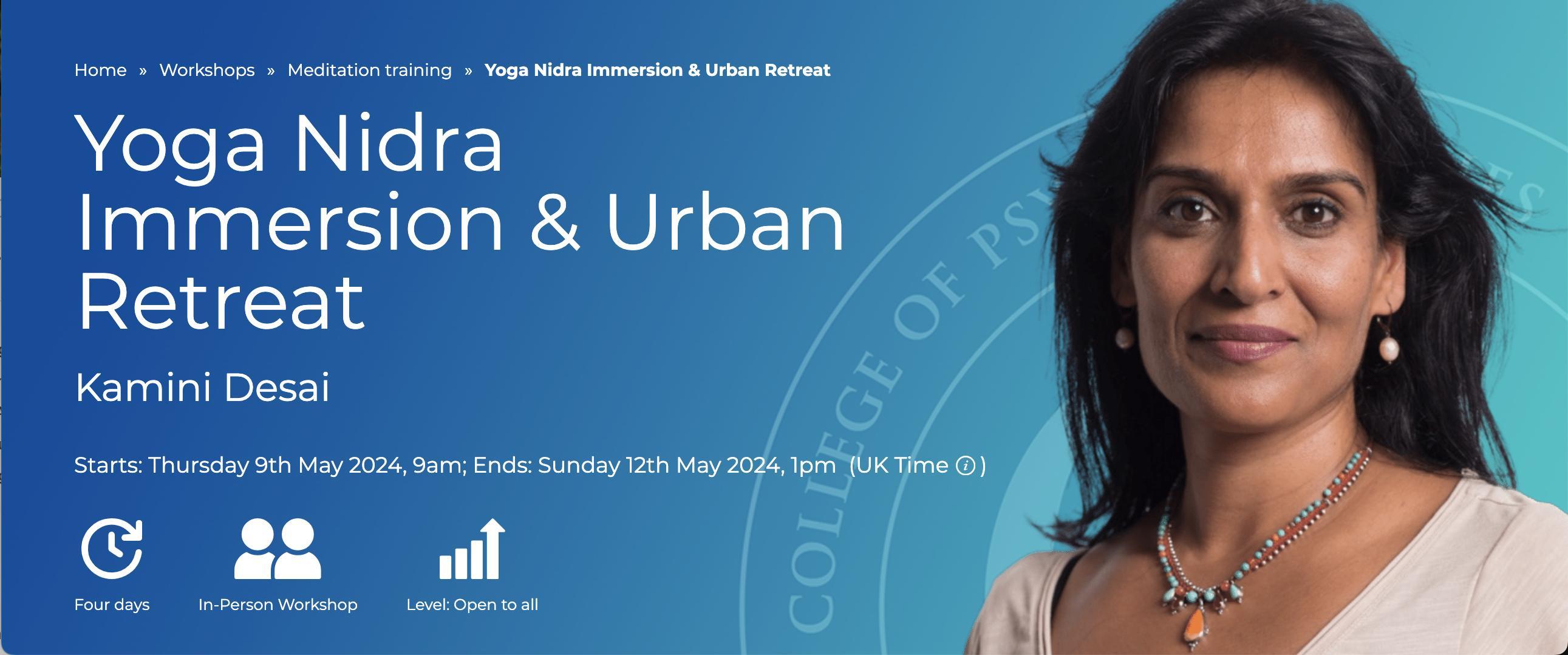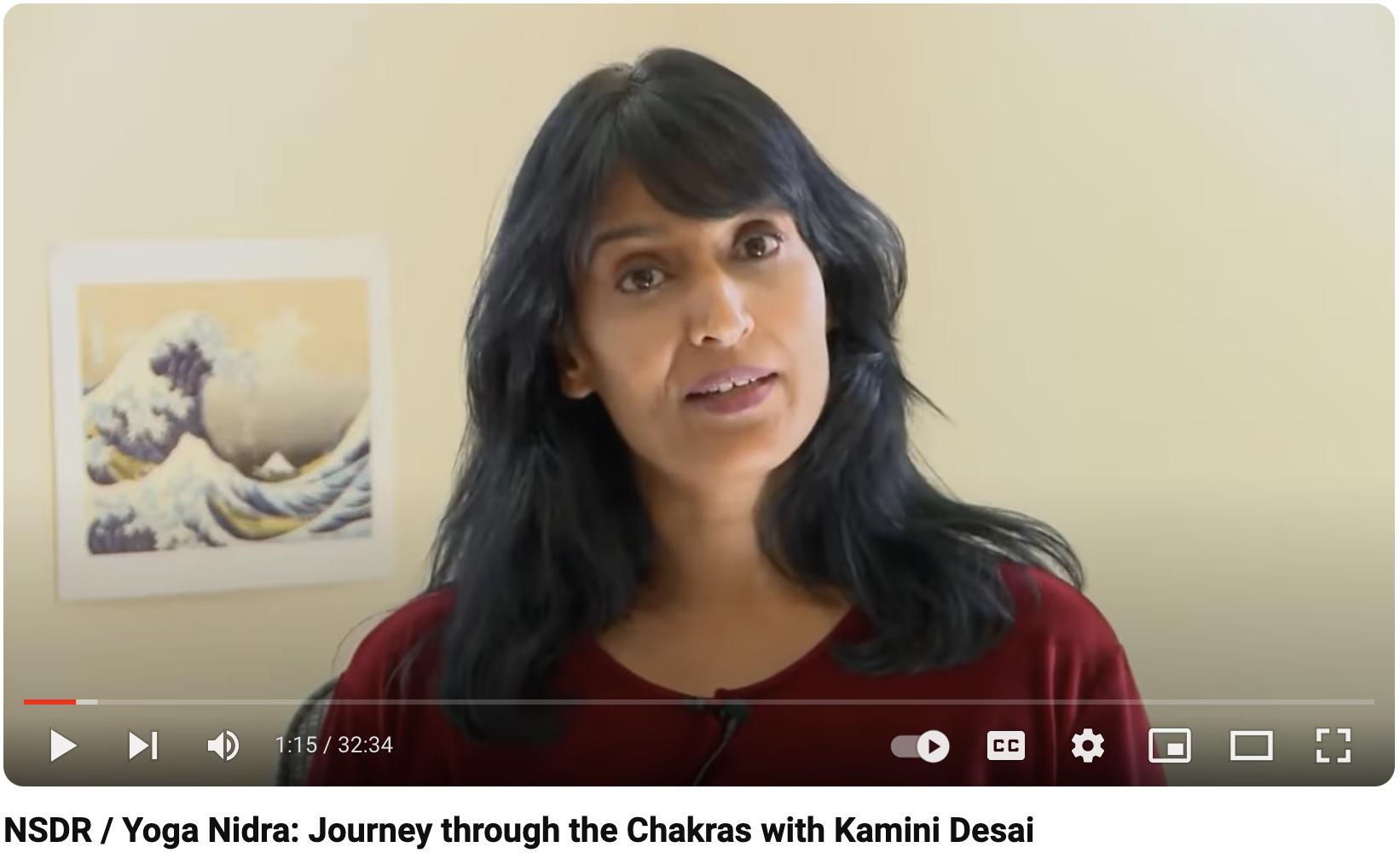Yoga nidra is the easiest, most accessible form of meditation we have ever encountered... and it is by far the most relaxing, too. The trickiest part of yoga nidra is trying to describe what it is! Over the years that we have been offering yoga nidra classes at The College of Psychic Studies, we've gone with various descriptions ranging from 'sleeping meditation' and 'sleeping wakefulness' to 'conscious sleep' and 'psychic sleep'. And while yoga nidra is all of these, it is also so much more. Here, we unpack the question, 'what is yoga nidra?' and offer a glimpse of the jewels it offers...
What is yoga nidra in simple terms?
Yoga nidra is a deeply relaxing and rejuvenating guided meditation technique that leads you into a state of deep relaxation - a relaxation so deep it resembles sleep - while maintaining full consciousness. During yoga nidra, we lie down in a comfortable position with blankets and pillows, on a yoga mat or bed. We close our eyes and follow verbal instructions from our tutor. You may have attended yoga nidra sessions with Grainne McAnallen or Kamini Desai at The College of Psychic Studies, and will remember that during the session, they guide us through a systematic relaxation of the body, focused breath awareness, visualisation, and the repetition of a mantra or affirmation.
Learn yoga nidra in our 4-day yoga nidra retreat:

Why practice yoga nidra?
Yoga nidra is designed to induce a state of profound relaxation, promoting physical, mental, and emotional wellbeing. It's said to reduce stress, anxiety, and insomnia, while enhancing clarity, focus, and creativity. Some practitioners also believe that regular practice can lead to deeper spiritual insights and self-awareness.
Despite its name, yoga nidra isn't actually about sleeping; it's about reaching a state of consciousness that is just below waking and just above sleeping, where deep healing and inner exploration can occur. A typical yoga nidra session lasts around 20 to 45 minutes, and even a short practice can leave you feeling refreshed and rejuvenated.
What is the science of yoga nidra?
No answer to the question 'what is yoga nidra?' would be complete without touching on brainwaves. Brainwave activity is essential to the efficacy of this practice. Yoga nidra encourages a state of relaxed awareness, where practitioners are deeply relaxed yet fully conscious and receptive to the guidance provided. The practice can help modulate brainwave activity, promoting relaxation, stress reduction, and enhanced mental well-being. Here's what happens to our brain when we practice yoga nidra:
Beta Waves: Beta waves are associated with active, waking consciousness and alertness. During the initial stages of yoga nidra, especially during the relaxation and breath awareness phase, beta waves may dominate as you maintain awareness and focus on the instructions.
Alpha Waves: Alpha waves are associated with a relaxed yet awake state of mind. As you progress deeper into the practice, especially during guided visualisations and body scanning, alpha waves may become more prominent. This state is often described as a "twilight" zone between wakefulness and sleep.
Theta Waves: Theta waves are associated with deep relaxation, meditation, and creativity. During yoga nidra, especially in the later stages as you enter a deeper state of relaxation, theta waves may dominate. This state is often characterised by vivid imagery, inner exploration, and a sense of timelessness.
Delta Waves: Delta waves are associated with deep, dreamless sleep and unconsciousness. While yoga nidra aims to keep practitioners in a state of conscious awareness, some of us may experience a shift toward delta waves, particularly if we enter a very deep state of relaxation bordering on sleep. And we have to say, the delta waves are a very easy landing ground in a yoga nidra session with Kamini or Grainne!
What does a yoga nidra practice look like?
Yoga nidra works through a combination of relaxation techniques and guided visualisation, leading you into a state of deep relaxation while maintaining awareness. Once we are lying comfortably, covered with a blanket and supported by pillows, we are ready to begin our yoga nidra session. Here's how it generally works:
- Physical relaxation: The practice typically starts with a systematic relaxation of the body. You're guided to relax and release each part of your body, starting from the toes and moving up to the head. This helps release physical tension and prepares the body for deep relaxation.
- Breath awareness: Throughout the yoga nidra practice, you're encouraged to maintain awareness of your breath. Focusing on the breath helps calm the mind and deepen relaxation.
- Guided visualisation: Your tutor will guide you through various visualisations, often involving imagery, sensations, or symbols. These visualisations can evoke feelings of peace, joy, or contentment, and they may also help you explore deeper aspects of your psyche or subconscious mind.
- Intention-setting: In yoga nidra sessions, you're invited to set an intention or sankalpa. This is a positive affirmation or resolve. You will be invited to repeat this sankalpa mentally during the practice. This intention is believed to plant a seed in the subconscious mind, influencing positive changes in your life.
- Entering the hypnagogic state: As you relax deeply, you may enter a state of consciousness known as the hypnagogic state, which is the transitional state between wakefulness and sleep. In this state, your brainwaves slow down, similar to the early stages of sleep, but you remain conscious and receptive to the guidance.
- Deep relaxation and integration: Throughout the session, your body and mind continue to relax deeply, allowing for integration and healing on physical, mental, and emotional levels. This deep relaxation rejuvenates the body, reduces stress, and promotes overall wellbeing.
A regular practice of yoga nidra is believed to lead to profound relaxation, improved sleep, enhanced creativity, and greater self-awareness.
Try out yoga nidra with Kamini Desai:

Want to go deeper in your yoga nidra journey? Join our retreat:

Join our newsletter to keep connected with The College of Psychic Studies.





